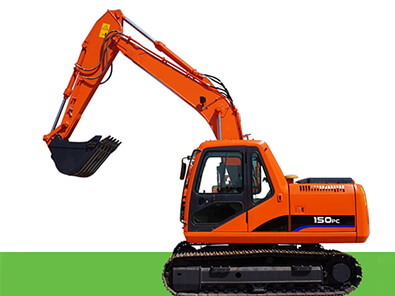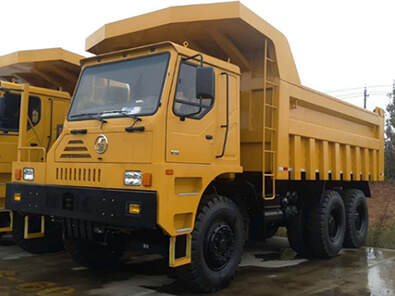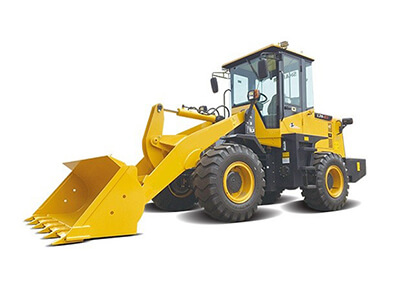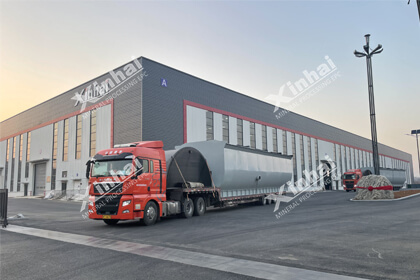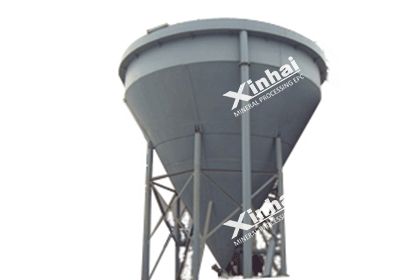Mining Research & Design Service You Need to Know
 Miya
Miya
 Dec 15, 2022
Dec 15, 2022
 1101
1101
If you want to know more details about equipment, solutions, etc, please click the button below for free consultation, or leave your requirements!
01RESEARCH & DESIGN
BackMining research and design includes consulting service, design service, and theoretical studies. To be specific, it covers project scheme, FSR, preliminary design and safety facilities design, construction drawings design, rock mechanics and filling test.
1.1 Consulting Service
1.1.1 Project scheme
Project scheme is an important component of preliminary design, providing basis for project establishment and guiding follow-up work.
It aims to answer such questions as project construction necessity, project scale, initial production technology, investment estimation and financial assessment.
The scope of project scheme should include following items:
1) Project construction basis and necessity;
2) Preliminary analysis on resource and construction conditions;
Resource conditions: preliminary analysis on project geology, resource reserves and future prospects, mineral processing test, and deposit exploration and exploitation.
Raw material supply conditions: source, composition and amount of raw materials.
Construction conditions: fuel, power supply and water supply, transportation and future prospects, local environments, and external assistance.
For projects adopting new technologies and equipment, the basis, scope and content of introduction should be provided.
3) Primary plan for project location and scale, product and production technology;
4) General environmental impact assessment;
5) Cost estimation and funding;
6) Project schedule: arranged based on the schedule of design preparations, design, construction, commissioning and production;
7) Primary elevation on economic and social benefits;
8) Essential attached documents: entrustment agreement, regional map, general layout diagram, and process flow diagram.
For joint venture projects, there should be investors’ information, reason for joint venture, investment forms, and capital contribution requirements.
1.1.2 Feasibility study report (FSR)
FSR is usually required by the client or stipulated in the bidding document. In each case, relevant units must make clear the project’s content, scope, prerequisites, schedule, funding and ways of cooperation, and give opinions on the project scale, product scheme, equipment capabilities and other subjects to provide reference for FSR.
1) Principles and requirements
FSR requires thorough investigation, analytical calculation and scheme comparison in terms of resource (or raw material) conditions, external conditions, market demand, production scale and technology, product scheme, engineering layout, construction investment estimation, funding, cost estimation, economic benefits and construction schedule. By doing so, a basic understanding of project feasibility and construction will be acquired. FSR provides basis for decision making and construction scheme and lays a foundation for preliminary design.
Requirements for FSR: provide basis for balancing the plan for national economic development and the project construction plan; provide basis for financing and applying for bank loans; provide basis for plans for developing new technology, new equipment and new materials, and provide reference for other work; provide basis for negotiations and signing contracts with suppliers of new technology and equipment.
2) Original data
Generally, FSR should include below original data.
Enterprise planning or regional planning related to the project (if any), and relative approval opinions from the competent department or enterprise;
Geological exploration report approved by the relevant resource reserve commission;
Test documents compiled by research institutes to include major equipment and determine preliminary process for large-scale projects or projects adopting new technology;
Data provided by the exploration unit about engineering geology, hydrology and geological mapping to determine the plant site;
Data about local geography, local economy, composition and supply of local raw materials, water supply and drainage, power supply, transport, hydrology, meteorology, and environmental protection;
Predictions and analysis for market demand;
Data about existing production, equipment, environmental protection and techno-economic results for project upgrading and expansion;
Data about the manufacturer, category, form, specification, prices and supply of imported technology and equipment;
Other related data about techno-economic estimation.
02Design Service
Back1.2.1 Preliminary design
1) Conditions and original data for preliminary design
Below documents and original data are required for preliminary design:
FSR approval documents and experts’ review comments;
Geological exploration report approved by the relative resource reserves commission, and approved hydrological report on mining areas with complex hydrology;
Test report on mining, mineral processing, smelting and processing (if necessary), and test or investigation report approved by relevant authorities and experts for projects adopting new technology, new equipment and new material.
Data about project engineering geology and hydrogeology, topographic mapping, meteorology, earthquake, techno-economic results or other natural conditions;
Data about the supply of raw materials and auxiliary materials;
Data about water, electricity, transport, mechanical maintenance, vehicle repair, land requisition, and demolition;
Test report on the disposal of three wastes, environmental impact assessment report, and related approval documents;
Water and soil conservation report and related approval documents;
Test report approved by relevant authorities on the mining methods, open-pit slope stability and tailings stacking (if any);
Original general layouts, current status of exploitation, as-built drawings or surveyed drawings of workshops and buildings, equipment configuration drawings, as-built drawings of concealed works, ground and underground pipeline drawings of available buildings, and data about existing production, technology and equipment and financial results for project upgrading and expansion;
Data about techno-economic estimation;
Entrustment agreement, design contract and other data.
2) Principles and requirements
The preliminary design must meet the state standards and be formulated based on the approved FSR and experts’ comments. Relevant national and local policies, rules and regulations must be followed, and the above mentioned design conditions and original data must be incorporated.
The preliminary design must meet the following requirements:
Determine the overall design plan and process plan based on full evaluation on the project’s social, economic and environmental benefit, including project capacity, product output and quality, technical process, major equipment selection, and key techno-economic indicators; conduct full analysis and comparison on few technology plans or auxiliary engineering plans that cannot be confirmed temporarily so that they can be determined before the review of preliminary design or the beginning of construction drawing design.
Provide basis for the order of major equipment and materials;
Provide basis for signing agreements on land requisition and the relocation of residents;
Provide basis for saving construction costs, project construction, outsourcing and compiling capital construction plans;
Make preparations for construction drawing design.
Generally, the design principles and schemes stipulated in FSR should avoid major revision, such as plant location, design capacity, product scheme, mining scheme, major technical process and equipment selection, and major construction standards. Original data or other important conditions may change so greatly that original process plans and design principles fail or the investment estimation of preliminary design may far exceed that of FSR. When that happens, FSR can be revised only when the causes are identified on the basis of full techno-economic analysis and reapproved by the authorities.
1.2.2 Construction drawing design
Before the commencement of construction drawing design, the authorities’ approval comments on preliminary design must be earnestly studied and implemented. Acquire a good understanding of the client’s order of major equipment. If construction unit is determined, get information about its technology and equipment capabilities to make full preparations for construction drawing design.
Under general circumstances, construction drawing design should follow the design principles and schemes of the approved preliminary design. Equipment order or other major conditions may change so that key parts of the preliminary design are revised. In this case, the revised preliminary design should be reapproved by the authorities. If the revision has no major impact, consult with the client to reach an agreement.
Basic conditions for construction drawing design:
1) The preliminary design is approved by the authorities;
2) Major problems raised in the preliminary design are resolved or the preliminary design is improved in supplement exploration, prospection and test;
3) Agreements on water and power supply and land requisition are signed and implemented;
4) Thorough geological investigation data and surveying maps with large scales are provided;
5) The order of major equipment is implemented, and basic data such as general assembly drawings and foundation drawings of major equipment are collected to meet the design requirements.
Construction drawing design scope:
1) All drawings for construction and installation;
2) Instructions for major points of construction, installation and production;
3) Technical data about non-standard equipment and special requirements for manufacturing;
4) Construction drawing design instructions;
5) List of equipment and materials and order list of belt conveyor and other equipment.
According to the particular conditions or the client’s requirements, the equipment list of construction drawing design can be recompiled, or that of preliminary design can be revised or supplemented.
Construction drawing design level: It should meet the following requirements:
1) The order and procurement of all equipment and materials are covered;
2) The manufacturing of non-standard equipment and components is included;
3) There are guidelines for construction and installation.
03Research Service
Back1.3.1 Research on rock mechanics
1) Research method
The purpose of rock mechanics research is to find out the objective laws and control methods of mine pressure occurrence during real production and put forward prevention and control measures for low-pressure risks. Meanwhile, the theories of rock mechanics can be used to guide mine design, construction and installation so as to ultimately exploit underground resources while ensuring safety, economic benefits, intense production and high indicators.
2) Issues on rock mechanics
Ground pressure control is an important means to ensure effective exploitation and production. A number of complex issues occurred in real production can be addressed through rock mechanics research. Take the following examples.
Methods can be found to control shaft ground pressure in harsh conditions;
Mining order, method, structural elements and stope maintenance method can be determined based on rock stress characteristics and ground pressure laws to ensure workplace safety and maximum exploitation;
Solutions can be found to mined-out areas;
Sliding caused by underground mining can be prevented;
Impact on ground buildings can be minimized and safe mining of coal under buildings, railroads and water bodies can be ensured;
The appropriate slope angle can be determined and unstable slope can be anchored;
Issues involving rock blasting can be solved.
1.3.2 Filling test research
1) Cut and filling stoping
In recent years, cut and filling stoping has been widely applied around the world. There are two reasons for this phenomena. First, the need for ensuring mine and stope stability increases with further exploitation of underground resources; second, greater resource recovery and better environmental protection are needed. For example, the environmental protection laws of Australia stipulate that the original ground terrain must not be damaged during underground mining. So open pits must be reclaimed, and cut and filling stoping or open stoping with subsequent filling must be adopted in underground mining. In Canada, mines adopting cut and filling stoping accounts for over 40%. In total, mines applying the two methods account for 70%-80%. In South Africa, almost all underground gold mines adopt these methods.
2) Filling test
Filling test includes settlement test, slump test, strength test and round-pipe test.
Filling test can provide an important theoretical basis for the design of filling system and production. The filling technology can be determined by analyzing the physical properties of tailings. The test can identify the technical conditions for filling and the filling method, so as to ensure effective filling of the mined-out areas and sound exploitation.
To wrap up
If you want to know more details about mining research and design service, welcome to contact us via online service, or leave a message. We will give response as soon as possible.
 +86 183 3575 8886
+86 183 3575 8886 pinklaurabao@gmail.com
pinklaurabao@gmail.com




 Message
Message Chat Now
Chat Now


